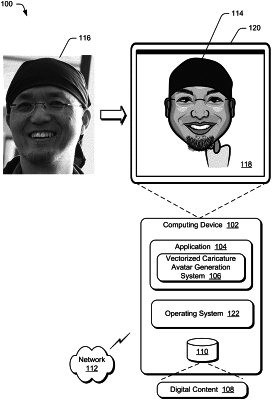| CPC G06T 11/00 (2013.01) [G06T 7/10 (2017.01); G06V 40/171 (2022.01); G06T 2207/20081 (2013.01); G06T 2207/20092 (2013.01); G06T 2207/30201 (2013.01)] | 20 Claims |

|
1. In a digital medium environment, a method implemented by at least one computing device, the method comprising:
receiving an image including a user face;
identifying a segment of the image that identifies a facial feature of the user face;
generating, for each of multiple face parameters, a face parameter value by processing a first portion of the user face that excludes the facial feature using a first machine learning system;
determining segment parameter values for the segment of the image by processing a second portion of the user face that includes the facial feature and excludes the first portion of the user face using a second machine learning system that is separately trained from the first machine learning system to determine the segment parameter values for the facial feature, the second machine learning system trained using training data that includes corresponding segments of multiple user images that identify the facial feature in the multiple user images and known segment parameter values for the corresponding segments of caricature avatars corresponding to the multiple user images, the second machine learning system having been trained using the known segment parameter values that are changed from default values during manual generation of the caricature avatars while masking the known segment parameter values that are unchanged from the default values during the manual generation of the caricature avatars; and
generating, from the face parameter values and the segment parameter values, a vector image that is a caricature avatar of a user depicted in the image.
|